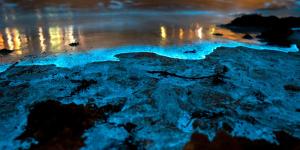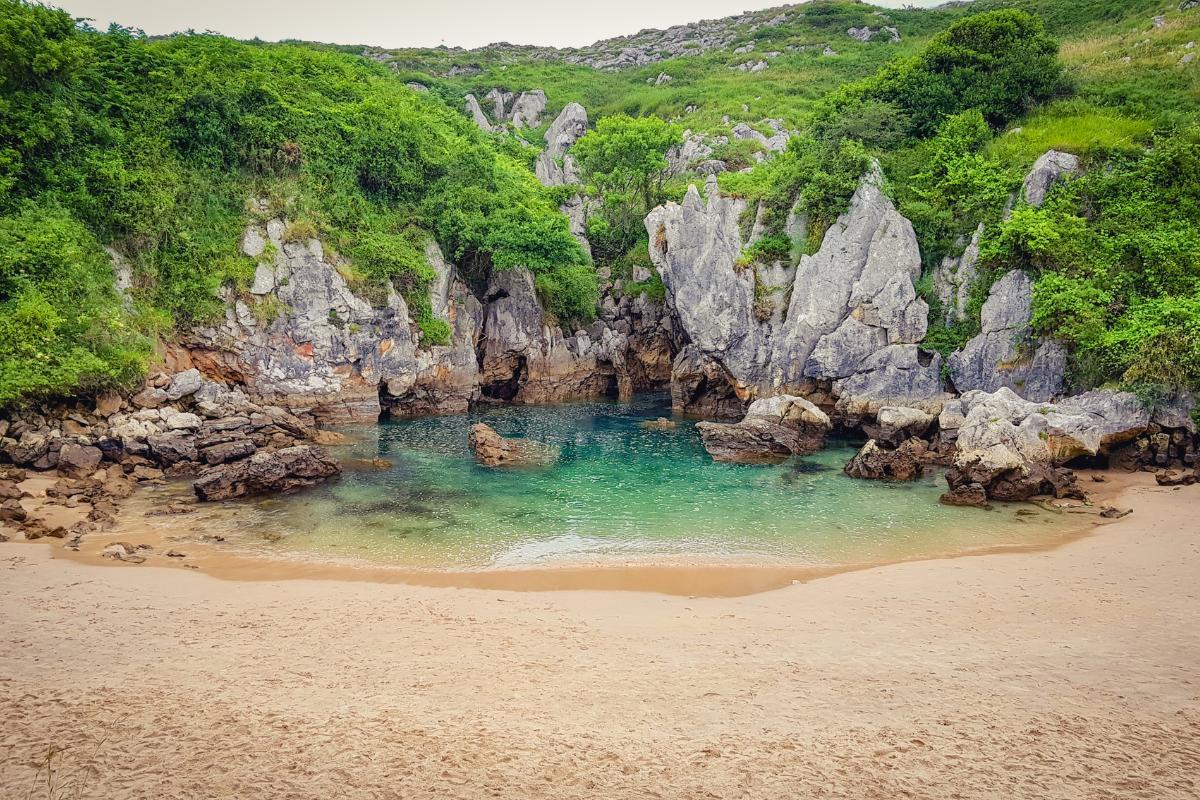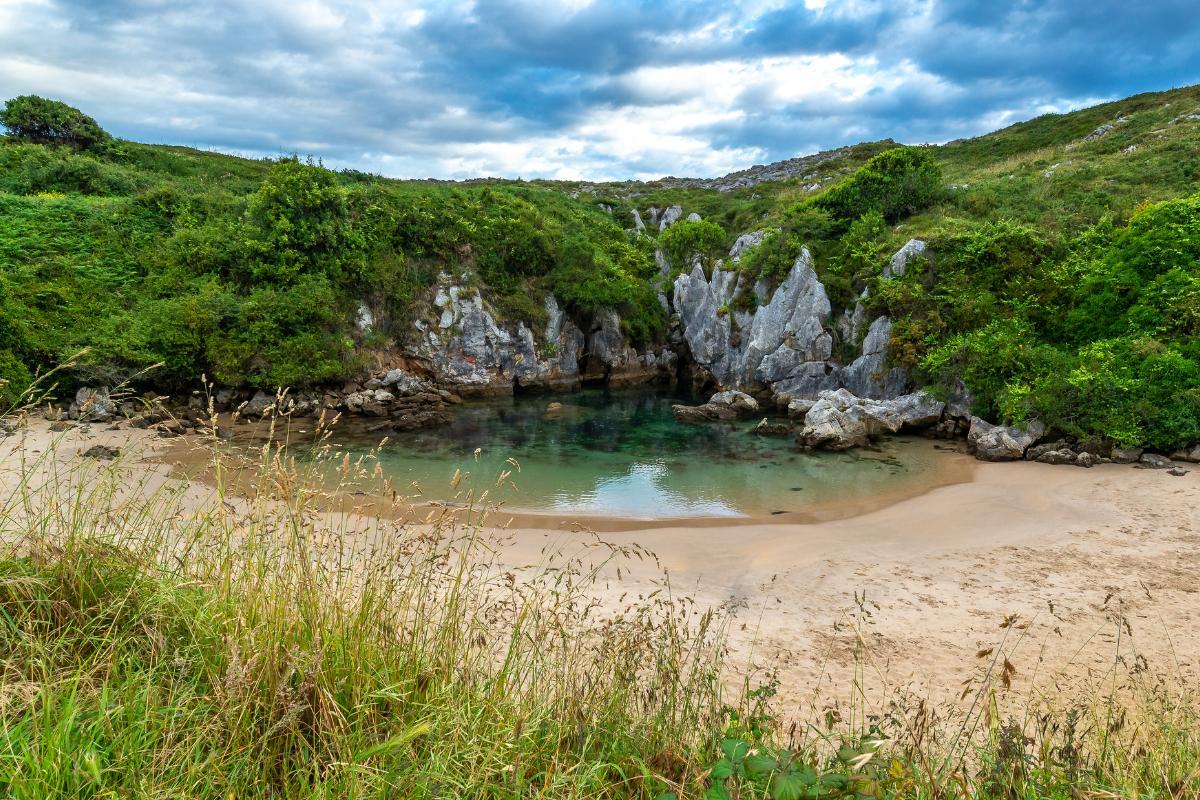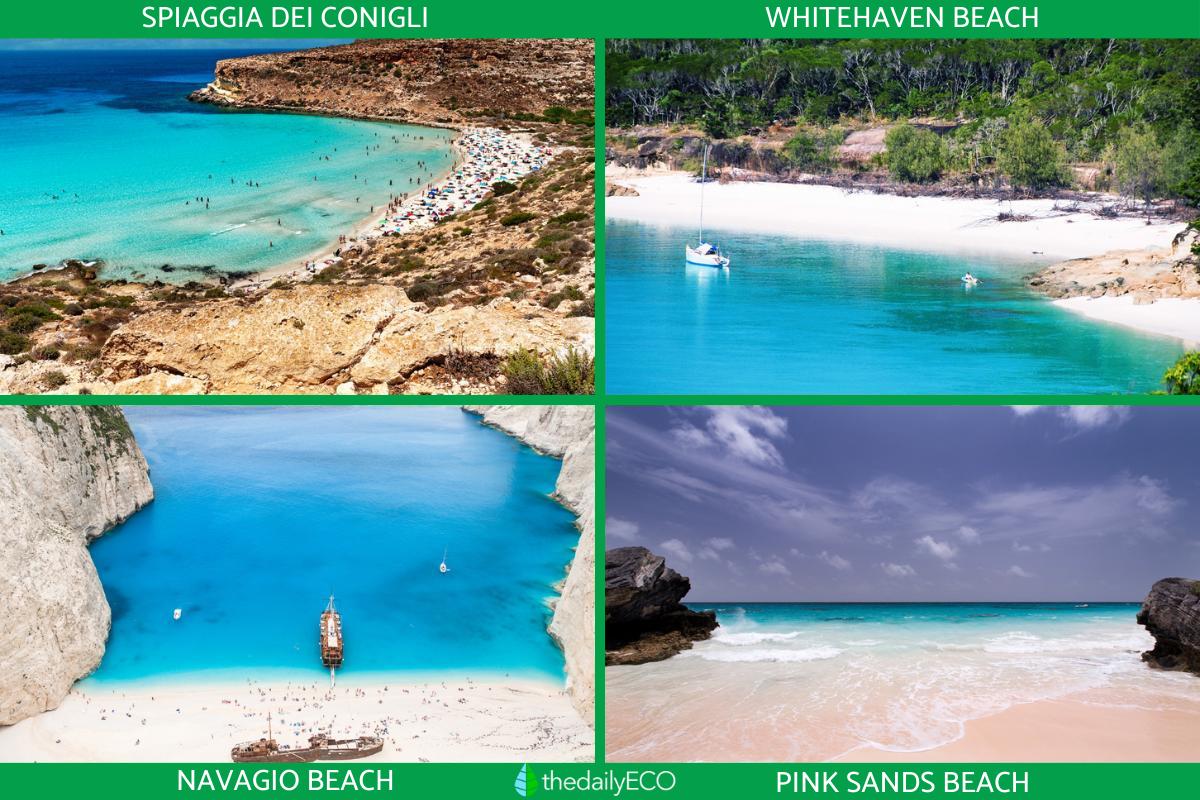What Is the Smallest Beach in the World?


The shortest beach in the world is Playa de Gulpiyuri, an inland beach in the North of Spain. It is important to keep in mind that the criteria to determine the smallest beach can vary. For example, some may use the length of coastline, but others may consider the total land area of sand to be the most significant factor. Geographical features may also change over time, both due to natural and human influences. thedailyECO takes all of this into consideration in our article which asks what is the smallest beach in the world?
What is the name of the smallest beach in the world?
Gulpiyuri Beach (Playa de Gulpiyuri in its original Spanish) is a unique and singular beach located in Asturias, Spain. One of the reasons it is so unique is that it is not directly connected to the sea, being located inland from the coast. The world's smallest beach is approximately 40 meters long. It is surrounded by cliffs and is essentially a sinkhole that has flooded. It was formed by underwater cracks and caves that allow sea water to reach this small bay through underground tunnels.
Playa de Gulpiyuri is known for its natural beauty and crystal clear waters. It has been declared a Natural Monument. Although it is small, it offers visitors a unique experience as it looks like a conventional beach despite its inland location. It is a popular destination for those looking to explore the natural beauty of the Asturian coast in Spain.

Features of the smallest beach in the world
Playa de Gulpiyuri is not only the world's smallest beach, but it has certain features which make it shuch a magical attraction. These characteristics include the following:
- Geological formation: the formation of Playa de Gulpiyuri is linked to karst erosion, a geological process in which water dissolves limestone rock. When this happens, it creates underground caves and crevasses. In this case, these cavities allow sea water to flow towards the beach, creating a type of natural pool away from the coastline.
- Access and Location: access to Gulpiyuri is on foot from the coast as it is not directly accessible by road. To get there, visitors walk along a path from San Antolín beach. This aspect helps keep the beach in a more pristine state and preserve its natural environment.
- Water level fluctuation: the water level in Gulpiyuri beach may vary due to tides and weather conditions. At times of high tide, water can flow more easily onto the beach, creating a deeper pool and giving the impression of a ‘floating beach’.
- Vegetation and environment: the beach is surrounded by cliffs covered with vegetation, providing a scenic environment and protecting the beach from strong winds. The combination of crystal clear waters, sand and the surrounding landscape creates a calm and picturesque atmosphere.
- Conservation and protection: Gulpiyuri has been designated as a Natural Monument since 2001, meaning it is protected for its geological uniqueness and ecological value. Conservation measures seek to preserve this unique environment and guarantee its maintenance over time.
- Tourist attraction: despite its small size, Gulpiyuri has gained popularity as a tourist destination in Asturias. Visitors appreciate the rarity of an inland beach and the beauty of its natural surroundings. Tourists are advised to respect conservation regulations to preserve the integrity of this special place.
- History and discovery: Playa de Gulpiyuri is not only a geological phenomenon, but also has an interesting history. Although the beach has been around for a long time, it was not until the 20th century that it became more well-known outside of locals. Its discovery by a wider public is attributed in part to the increase in tourism to the region and the spread of information about this unique place.
- Recreational activities: despite its small size, Gulpiyuri offers opportunities for recreational activities such as swimming and diving. The natural pool created by the unique geological conditions provides a safe place to enjoy the water, especially during lower tides.
- Flora and fauna: the natural environment of Gulpiyuri not only includes cliffs and greenery but is also home to a diversity of flora and fauna. The beach and its surroundings can be home to several species of birds, insects and plants adapted to the particular conditions of this habitat.
- Geological changes and conservation: over time, the geological conditions of Gulpiyuri may change due to natural and human factors. Active conservation plays a crucial role in the preservation of this unique site. Any change in geology or beach access can affect its uniqueness, so conservation efforts seek to maintain its natural state.
- Cultural influence: the smallest beach in the world has also left its mark on local and regional culture. It may have inspired artists, writers and filmmakers. Its uniqueness may have influenced the cultural identity of the Asturias region.
- Challenges and threats: despite its Natural Monument status and conservation efforts, Gulpiyuri faces challenges such as tourist pressure and possible pollution. Sustainable tourism management and environmental awareness are crucial to preserving this natural treasure.
Learn about one type of conservation challenge with our article on what are the causes and types of coastal erosion?

Other small beaches around the world
While Playa de Gulpiyuri is considered by most to be the world's smallest beach, there are other contenders which rival it in terms of diminutiveness. Playa de Gulpiyuri is unequivocally the world's shortest beach, but the following are some other of the world's smallest beaches:
- Spiaggia dei Conigli (Rabbit Beach): located on the island of Lampedusa, Italy, this beach has been considered one of the most beautiful in the world.
- Anse Source d'Argent: located on the island of La Digue in the Seychelles, this beach is known for its huge granite rock formations and crystal clear waters.
- Whitehaven Beach: found on Whitsunday Island, Australia, it is famous for its white sand and turquoise water. Regardless of size, it has been determined one of the best beaches to visit in the world.
- Navagio Beach (Shipwreck Beach): on the island of Zakynthos, Greece, this beach is famous for housing the remains of a shipwreck on the shore. It is a cove beach which is sometimes known as ‘Smuggler's Cove’.
- Pfeiffer Beach: this small beach is found in California, USA. It is part of Big Sur and is known for its unique purple sand caused by the manganese minerals present in the area.
- Manuel Antonio Beach: this small beach is part of the Manuel Antonio National Park, Costa Rica, meaning it is part of a conservation area with nearby rainforest. Learn more about these forested areas with our article on the difference between a rainforest and jungle.
- Playa del Amor (Hidden Beach): in the Marietas Islands, Mexico, this beach was formed through volcanic activity and is accessible through an underwater tunnel.
- Cala Macarelleta: Located in Menorca, Spain, this small beach has turquoise waters and is surrounded by cliffs and pine forests.
- Boulders Beach: this one is near Cape Town, South Africa, and is famous for its colony of beach-dwelling African penguins.
- Pink Sands Beach: on Harbor Island, Bahamas, this beach is notable for its pink sand, which gets its color from tiny shell fragments.
Now that you know what is the smallest beach in the world, you may want to see some more geographical superlatives with our article on what are the longest rivers in the world and where is the world's oldest tree?

If you want to read similar articles to What Is the Smallest Beach in the World?, we recommend you visit our Facts about nature category.








